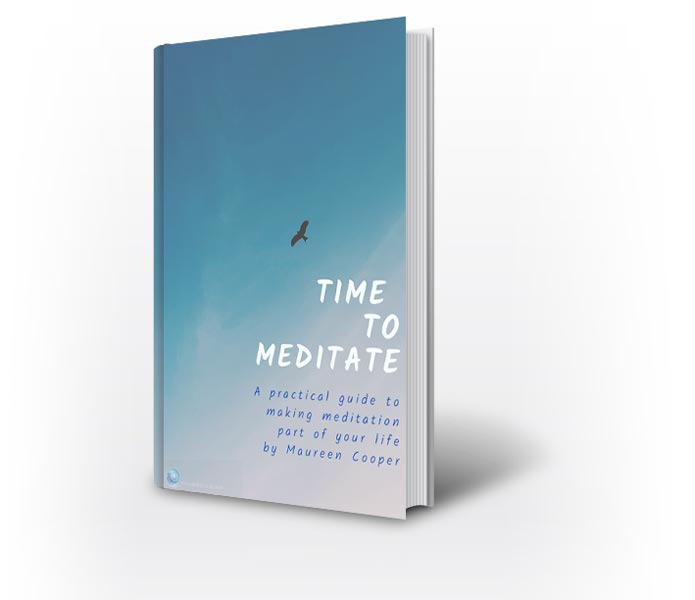A friend of mine told me a wonderful story about his early days of leading meditation sessions. At the time of this story he was working full time, had a young family and had really only been meditating himself for a couple of years. on top of all this he volunteered at a local Buddhist centre in Dublin, where he was asked to hold the introductory meditation session before the talk of the evening began. He was eager to help but really over-extended. My friend told me that he would rush out from work, grab a quick bite to eat on the run and dash across town to get to the Buddhist centre. Oh, and by the way, the room where the evening talk was held was up eight flights of stairs with no lift. He said he would arrive out of breath, hassled and all over the place. When he sat down in front of the group, he would have trouble remembering what it was that he was supposed to do.
I am sure he was exaggerating because he became a really good meditation guide, but his story often comes back to me. Our lives tend to be so busy and over-scheduled. When we finally sit down to do our meditation, our minds are often racing. We don’t give ourselves time for settling into meditation.
In this post I am going to share a simple routine for this process of settling.
-
Choose your meditation spot well
You don’t need to be fussy about where you meditate. At the end of the day you can do it anywhere. You just need to be sure that where you choose works for you and you feel comfortable there. If you want to choose a place outside, then go for a spot where people will not stare at you. You need somewhere a bit secluded—or you can always wear sunglasses!
If you are doing your session at home, then make sure you are going for a place where your family, or flatmates are not about to start an activity. You don’t want a hassle about who is going to do what, where.
Above all, choose somewhere that feels right.
-
Remember why you want to meditate
It is good to just take a moment as you sit down to remember why you wanted to meditate in the first place. You will have heard about all the benefits of meditation. Which are the ones that resonate with you most? Bring them to mind as a way of inspiring your session.
Perhaps you have a favourite benefit? Bring it to mind and remember why this was important to you. It could be that one benefit pre-occupies you at the moment but next moth it will be a different one. That’s fine. The point is to connect with the inspiration for yourself right now.
-
Take a few deep, slow breaths
It’s a good idea to take a few really good deep breaths before you start. It helps us to relax and to arrive on our meditation seat – to settle into meditation. I find it helps me to make a break from the activities I have been busy with and the focused, quieter time I am going for in meditation. You can do this before you sit down and combine it with a stretch. Do whatever works for you.
-
Pay attention to your posture
The way you arrange your body for meditation will affect the meditation itself. It is a crucial element in how you settle into meditation. The posture and the meditation go hand-in-hand. There are two fundamental things to keep in mind—relax but be alert. It’s easy to get stiff and self-conscious when we sit to meditate. We try to sit ‘properly’ and usually end up being uncomfortable.
Here is a simple checklist:
- Back straight but respecting the spine’s natural curve
- Chin slightly tucked in
- Eyes open with the gaze slightly downwards
- Relax your shoulders
- Legs crossed if you are on a cushion, feet firmly on the floor if you are in a chair
- Hands relaxed on your thighs
- Mouth relaxed, with lips slightly parted
If you feel uncomfortable, just stretch and come back to the posture.
-
Do a simple body scan
A full body scan meditation takes about 45 minutes, but you can do a simple body scan in just a few moments.
Bring your attention to the top of your head, and slowly let it travel downwards through your whole body. Try not to miss any parts of your body—remember the back of your neck, your arms and elbows, your hips, legs and so on. When you reach your feet just relax. Whatever aches, pains, and sensations that you notice, that’s fine. Really. Just notice them. Try not to have a reaction—I don’t like this feeling in my shoulders, my stomach is too big. Just notice and move on.
This is just a simple check-in with your body to help with settling into meditation.
-
Notice your mood
The next part of the checklist for settling into meditation is to check in with your mood. This does not mean you have to arrange yourself to be in a good mood. Just look into how you feel and notice whatever is going on. Perhaps you are a bit tired – just notice. Maybe you are looking forward to an event you have coming up – just notice your excitement. The idea is to look at your mood without judgment, accepting it as it is, without wanting to change it. This is the kind of attitude we have to our thoughts and emotions as they come and go during our meditation session.
-
Connect your meditation to your world
I find it helps to make a brief aspiration at the beginning of my meditation session. Sometimes I make it quite general—like a hope that through meditation I will learn to calm my mind and become more useful for other people. Other times I will try to connect it with something that is going on in the world, or in my own life. I might think of people going hungry in Venezuela and hope that as meditation becomes more popular in society it will lead to great wisdom and kindness in politics. It helps inspire me to complete my session.
The 7 steps that I have shared here are ones that help me with settling into meditation. You might not want to take on the whole 7, or you may have one or two others that help you as well. If you do, please do share in the comments section. One last tip—decide what you need for your session and make sure you have it to hand. Are you using a timer? Have you turned your phone off? Are you drinking tea, coffee, or water? Do you need a blanket? Decide on all this before you start, so that once you sit down you can relax and not worry about anything else.
If you like checklists here is one to help you remember the steps to help you settle into meditation. You can download the pdf Settling infographic-2
If you would like to go deeper into meditation, then try this online course – it’s packed full of practical tips for making room for meditation in a busy schedule.




